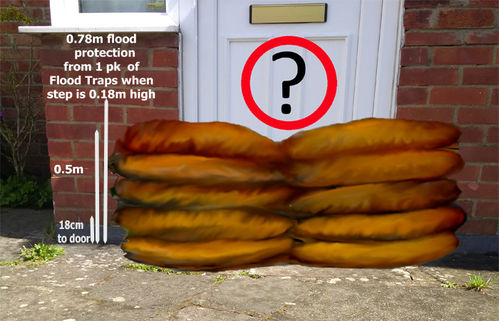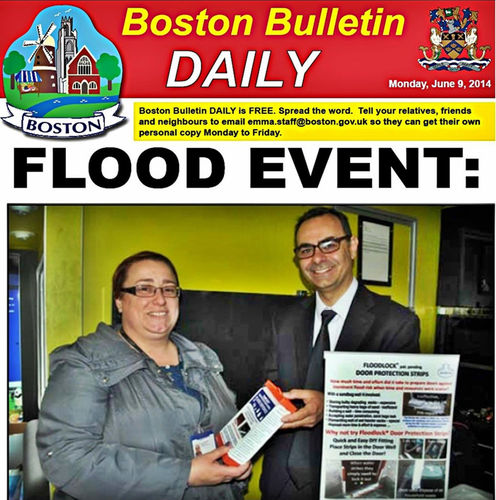Home Page Are sandbags the best way to keep flood water o...
UK 2007 Gov: upgrade from sandbags
As far as domestic and small business flood damage mitigation is concerned, sandbags have serious limitations according to British Flood Experts.
Sandbags are bags filled with dirt, it can be sand or earth. The idea is basically to fill a strong plastic or canvas sack with something heavy and even, so not rocks for example, and stack them up to build a wall.
After the serious summer 2007 Floods, during which 3 people died and 44,600 homes were flooded so badly that 1 year later people were still in temporary accommodation, the UK government commissioned Sir Michal Pitt to review flooding and advise how improve the UKs flood defences.
Click Pitt Review Executive Summary to go to the UK.Gov website where you can download all the advice Sir Micheal Pitt reported to the UK government. In executive summary (ES) 49 you can read how it advises government that that while experts can successfully deploy sandbags along roadsides or alongside important buildings to help stop them from flooding they found no convincing evidence to suggest that sandbagging provided effective protection to individual homes.
To emphasise and clarify ES.50 stated that sandbags have a role in bringing the community together so shouldn’t be immediately withdrawn but rather they should be phased out and replaced with more effective forms of temporary defence.
Sandbags are porous, so water works through the grains of sand which then act more like a sieve than a flood barrier on their own. That is why you see them used in front of doors with a plastic sheet.
As a flood defence barrier for doors they weigh a lot, typically 15kg (33 pounds) each when dry becoming 25kg (55 pounds) when wet. 10 or so are used at a time to make a wall about 0.5m (20 inches) high. So 150kg or 330 pounds of dead weight per outside door has to be moved before the flood and 250kg or 550 pounds after a flood. Imagine having to do that while panicked about other things that must be done to protect your home and family.
On the plus side in the UK the government and councils have been known to give sandbags away for free in times of well publicised disaster, but you usually need to collect and fill them yourself from a local depot. You may just have to move the 150kg from say the curb to the front door, but chances are you have to move that much into the sandbags first, then you have to bring them home – so you need to lift them and put them into your car or van… then you need to position them making sure you use the sheet well so the flood water does not just flow through gaps in the wall or between the grains of sand.
You can buy filled sandbags delivered to your home on line, 10 sandbags can cost 4 times as much as Flood Traps to build a flood barrier about 0.5m or 20" high.
Inflatable "sand less" sandbags can be washed away with the flood current, risking the creation of an unexpected and unwanted barrier further downstream which may force flood water to flood other properties and damage other areas.
Once the floods have gone the flood sacks wet with putrid contaminated water fill the air with a stench like raw sewage or dead fish and they have to be collected for disposal.
How sandbags compare to Floodlock Flood Traps.
Sandbags are:
x Tiring to fill
x Time consuming to prepare & lay
x Heavy even when dry (15 Kg)
x Take up a lot of space
x Very very heavy when wet (25Kg)
x Difficult to dispose of
x Start to decay once filled
x Ineffective at keeping flood water outdoors according to the Pitt Review
while Flood Traps are:
♦ Virtually effortless to lay, a child or a healthy octogenarian could do it.
♦ Ready to protect your home against flood damage in 35 seconds
♦ Just 120g or ¼ lb in weight per pack
♦ Packed in a box a little smaller than a sheet of A5 paper, 20cm x 12cm x 4.5cm to be more precise., so they are easy to store in a draw.
♦ 3-4kg once wet
♦ Disposable as household waste
♦ Ready for use while dry for years.
♦ Able to stop or at least reduce contaminated flood water flow through gaps around a door to a manageable trickle.
♦Outstanding and much better than other similarly affordable alternatives according to an expert in the field (who cannot be named as he works for an flood authority and has asked to remain anonymous).
Using several inflatable sandbags, sausages, worms, dams, sacks, snakes or the like to build a 0.5m high barrier in front of your door will cost more cash and time than the pack of Flood Traps you need to boost your robust door's seal by 0.5m (20") or more and the results will be much less significant.
Delivery Information
- UK delivery: £5.55 for 1-4 items, FREE for 5 or more items. Sent by Royal Mail First Class Signed For Post.
- Outside UK delivery: £11.99 for 1-4 items, FREE for 5 or more items. Include a local phone number and your tax code for the courier. Import duties and taxes are the buyer’s responsibility.
- UK prices include 20% VAT. Export prices exclude VAT.
- Delivery time: 1-2 weeks worldwide, depending on stock and postal services.


